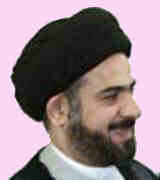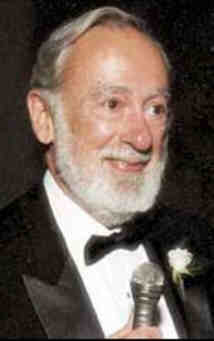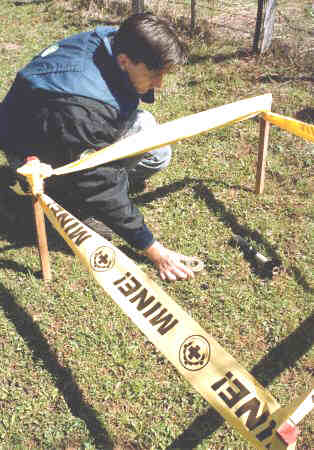 2001
Conjoined twins successfully separated.
^top^ 2001
Conjoined twins successfully separated.
^top^Nepalese (not Siamese) twins who were born joined at the head are surgically separated after nearly 90 hours on an operating table in Singapore. The complicated surgery to separate Ganga and Jamuna Shrestha was a success and the 11-month-old girls are doing fine. They are being treated by plastic surgeons following the operation and are in stable condition. Doctors began operating on the twins in the afternoon of 06 April and finished on this morning, about 88 hours later. They had initially hoped the operation would take no more than 40 hours. The girls' brains shared some of the same blood vessels, making the surgery extremely difficult and dangerous. Two teams of doctors, including a neurosurgeon and a plastic surgeon, worked around the clock to separate them, taking turns with brief breaks. Ganga and Jamuna have very distinct personalities. Ganga is more feisty and is always hungry, while Jamuna is more calm. They tend to fall asleep and get hungry at different times of the day [photo: Bushan, left and Sandhya Shrestha, second right, and nurses hold the twins before separation >]. The baby girls come from a poor family on the outskirts of Katmandu. Their mother, Sandhya, is a kindergarten teacher and their father, Bushan, helps his father in a small business. Both parents, who are in their early 20s, have been keeping an almost constant vigil at the hospital during the surgery with brief breaks to pray at a Hindu temple. Singaporeans have donated $358'000 to help the twins. The hospital has waived many of their charges, and national flag carrier Singapore Airlines paid for the girls, their parents and their grandfather to make the trip from Nepal. The family has been living with the Nepalese Gurkha community in Singapore. The Gurkhas, who come from Nepal, are famous for their service as a special group within the British military. In Singapore, they work as a special force with the police. |
1998 The Northern Ireland peace talks conclude as negotiators reach a landmark settlement to end 30 years of bitter rivalries and bloody attacks.
1998 Mike Saul, former general manager of Island Casino, an online sports-betting company, pleads guilty to conspiring to transmit bets and wagers via the Internet, the first time anyone ever pled guilty to Internet gambling charges.
1996 US President Clinton vetoes a bill that would have outlawed partial birth abortions.
| 1995
Time Warner begins ad sales for Pathfinder
^top^ Time Warner became one of the first companies to sell advertising on the Web when it started selling ads on its Pathfinder site. Sponsors like AT&T and General Motors paid about $30'000 per quarter to advertise on Pathfinder. Although some initial attempts to advertise on the Web brought protest from those Internet users who subscribed to the ethic that information should be free, Internet advertising became a multimillion dollar industry by 1999. However, many sites found they were unable to support themselves strictly through advertising and began to add commerce and sales to their sites. |
 2003
Haider al-Kadar and Abdul Majid al-Khoei [< photo],
Muslim mullahs, hacked with knives by an angry mob, inside the shrine of
Imam Ali in Najaf, Iraq. Al-Kadar had been in charge of the shrine under
Saddam Hussein Ministry of Religion. Al-Khoei was an exile who had returned
a week earlier, after the US liberation. He was with al-Kadar to effect
a reconciliation. The mob is made up of members of Jimaat-e-Sadr-Thani,
fighting for a power grab, now that repression of Shi'ites by the Saddam
Hussein regime is ended, on behalf of Muqtada al-Sadr, 22, surviving son
of mullah Mohammed Baqer al-Sadr, who was murdered, along with two other
sons, by the Iraqi secret service in 1999. The mob shouts insults at the
two mullahs. Al-Khoei fires a couple of shots from a handgun, then the enraged
crowd kills both. Hawjat Al-Islam (a Shi’a clerical rank below ayatollah)
al-Sayid ‘Abd al-Majid al-Khu’i (or Khoei) was the son of revered cleric
Grand Ayatollah Al-Sayid ‘Abd Al-Qasim Al-Khu’i. For the Shiites, who are
the majority in Iraq (repressed by the Saddam Hussein regime) and nearly
120 million in the world, Najaf is the third holiest city, behind Mecca
and Medina in Saudi Arabia. On 05 April 2004 an Iraqui judge compliant with
the US-led occupation would order the arrest of al-Sadr for his role in
the murders. This would result in his militia, the al-Mahdi Army, conducting
an uprising against the occupation troops.
2003
Haider al-Kadar and Abdul Majid al-Khoei [< photo],
Muslim mullahs, hacked with knives by an angry mob, inside the shrine of
Imam Ali in Najaf, Iraq. Al-Kadar had been in charge of the shrine under
Saddam Hussein Ministry of Religion. Al-Khoei was an exile who had returned
a week earlier, after the US liberation. He was with al-Kadar to effect
a reconciliation. The mob is made up of members of Jimaat-e-Sadr-Thani,
fighting for a power grab, now that repression of Shi'ites by the Saddam
Hussein regime is ended, on behalf of Muqtada al-Sadr, 22, surviving son
of mullah Mohammed Baqer al-Sadr, who was murdered, along with two other
sons, by the Iraqi secret service in 1999. The mob shouts insults at the
two mullahs. Al-Khoei fires a couple of shots from a handgun, then the enraged
crowd kills both. Hawjat Al-Islam (a Shi’a clerical rank below ayatollah)
al-Sayid ‘Abd al-Majid al-Khu’i (or Khoei) was the son of revered cleric
Grand Ayatollah Al-Sayid ‘Abd Al-Qasim Al-Khu’i. For the Shiites, who are
the majority in Iraq (repressed by the Saddam Hussein regime) and nearly
120 million in the world, Najaf is the third holiest city, behind Mecca
and Medina in Saudi Arabia. On 05 April 2004 an Iraqui judge compliant with
the US-led occupation would order the arrest of al-Sadr for his role in
the murders. This would result in his militia, the al-Mahdi Army, conducting
an uprising against the occupation troops. 2003
2003 "We all started running. We heard a child's voice screaming for help,"
she said. "We called the police and they came, but nobody could approach
the children."
"We all started running. We heard a child's voice screaming for help,"
she said. "We called the police and they came, but nobody could approach
the children."